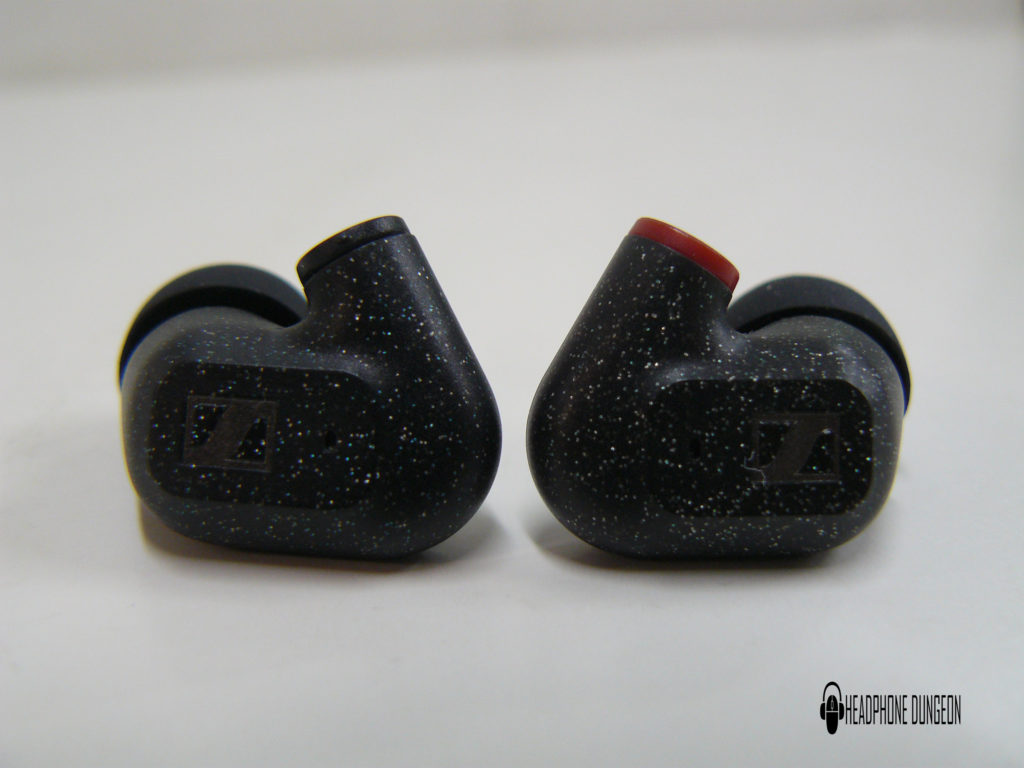Sennheiser is one of the most recognizable brands in the headphone world, and while they also supply a plethora of other products, only a few come close to the standard of their mainline over-ear models. Their Momentum true wireless earphones are among some of the best on the market, and even the Momentum 3 noise-canceling headphone has acquired some deserving accolades. What Sennheiser hasn’t been that noted for is their line of IEMs. In my opinion, they’re a bit looked over in this department even though I hold the IE800s in, particularly high regard. Recently, Sennheiser released their hotly anticipated follow-up to their IE series, the IE300. Can these new earphones make a statement?
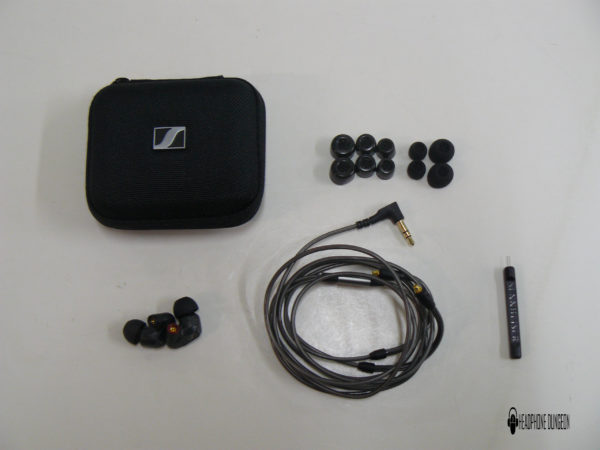
What You Get
- IE 300 Earphones
- Cable with MMCX connectors and 3.5mm plug
- Silicone & Memory Foam Sets (S, M, L)
- Carry Case
- Cleaning Tool
- User Manuals
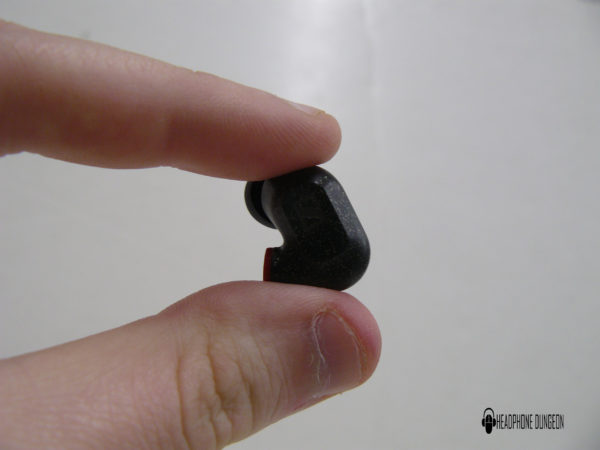
Look and Feel
When it comes to design, Sennheiser has a very specific style that adheres more to the professional, sophisticated aesthetic of Shure or Westone IEMs rather than a brand like Kinera, or Campfire Audio. Like the IE800s, the housing of the earphone is tiny and pill-shaped. The shell is given a bit of flair with a mineral-styled pattern, but everything about the body of the IE300 reminds me more of a stage IEM than an audiophile one. Considering its size, the fit isn’t going to be for everyone, as the miniature earpiece is going to have a certain feel that isn’t going to fly for some. Personally, I didn’t find a lot of issues with the fit. My only real issue was the feeling of the cable with the earloop, as the initial insertion isn’t as smooth as I would like. Including the size of the housing, you might be feeling more of that cable than the shell, but in terms of security and comfort, the IE300 does the job.
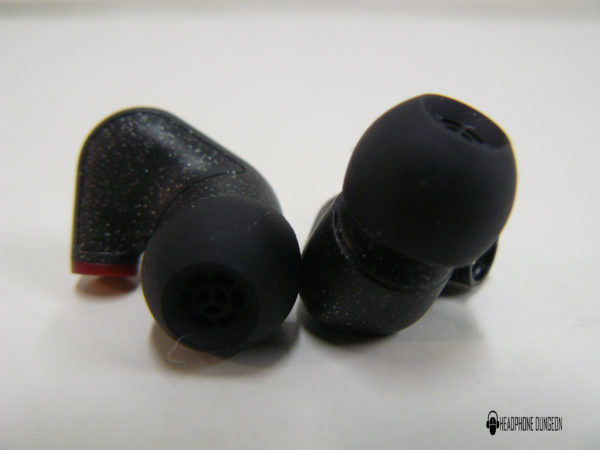
Design
With the IE300 and the construction of its driver system, Sennheiser looks to deliver something wholly unique. The IE300 houses a 7mm XWB transducer, a component that is known to excel in acoustic performance. With this design, you should expect greater accuracy, quicker transient response, and a sizable output. It should sound different than what you’re used to hearing with Sennheiser, as they’re aiming for a specific audiophile sound that they have not attempted yet, so I am excited to see what the results are.
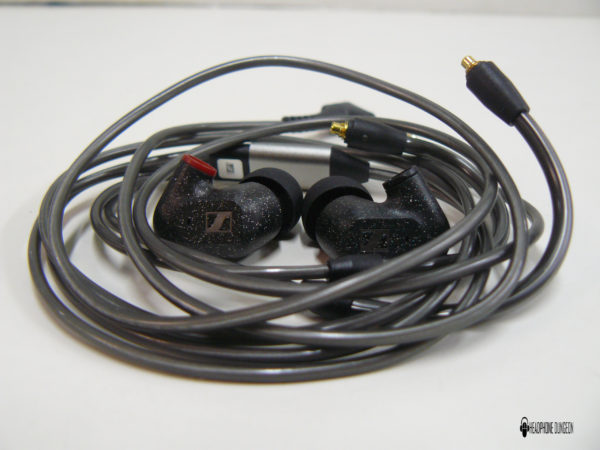
Output
The IE300 appears like your standard set of earbuds, but from the name, you know that they’re going to be more than that. With that, I assume that these earphones will only fully realize their potential with the right DAC/amp in order to get the clearest signal. With 16 ohms of impedance, you don’t need to juice them up too much, but a small DAC can make quite the difference. Using the ALO Pilot on my iPhone gave me some nice results, supplying me with ample volume with plenty of room to adjust loudness.
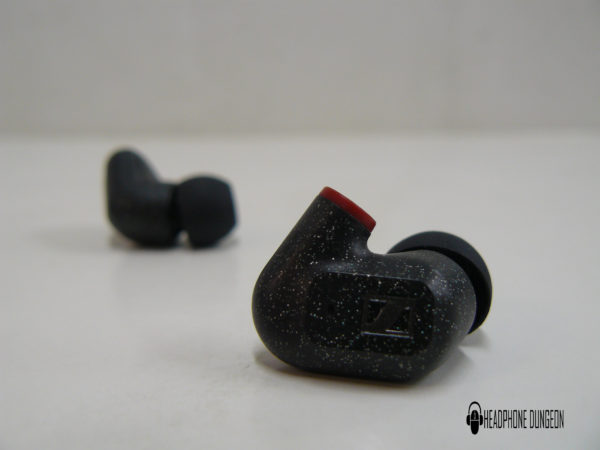
Soundstage
I am always impressed by the standard quality of imaging and clarity Sennheiser develops in a majority of their products. It’s the feature I’m most looking forward to when I try out anything from Sennheiser for the first time. The soundstage on the IE300 meets that expectation almost effortlessly. When it comes to width, the IE300 may not seem like much at first, but it’s the imaging and depth that really make this earphone special. The stereo field is full of intricate layering and clean separation that makes most elements discernible from the other. I wouldn’t say it’s expansive, but the response still finds a way to feel utterly immersive with its sense of accurate positioning in the stereo field.
Low End
At first, I was mixed on the bass response showcased here, as I thought the timbre just below the mid-bass could appear a bit bloated at times. After more time with it, this sensation wasn’t as prevalent, and I actually noticed a much warmer tonality and texture to the frequencies that were especially prevalent with intimate acoustic tracks. The way the lows resonate ends up being more colorful than clean, but the color is still satisfying.
Mids
The body of the lows definitely makes themselves known well into the midrange, but still appears smooth and somewhat clear. There’s a lot more emphasis in the low and upper mids, making this a more v-shaped timbre. However, there is still a considerable body to the mids, as instruments and vocal performances are still given sweet textures and a well-rounded tonality.
Highs
I found the treble here to be very sweet and easy to digest. Even when some frequencies can get a bit bright, they stay controlled and only showcase the non-piercing qualities of the highs. On the IE300, the treble adds a lot of lift to the sound signature, making a v-shaped timbre sound more complete with a greater sense of height. At its best, the treble can feature some sparkly textures that help bring out the signature considerably.
Summary
There is a lot to like in the IE300, as Sennheiser brings their standard for design with every product they deliver. I definitely enjoyed my time with the IE300, and though it’s not perfect, there’s a signature sound at work here with a lot to give. For the price of $299.95, it makes its mark within its circle, though there’s still a lot out there to discover.
Pros and Cons
Pros: Warm bass, Deep imaging, Sparkly highs
Cons: Somewhat awkward fit
The Sennheiser IE300 is available at Audio 46.
Headphonedungeon may get a commission from retail offers.

